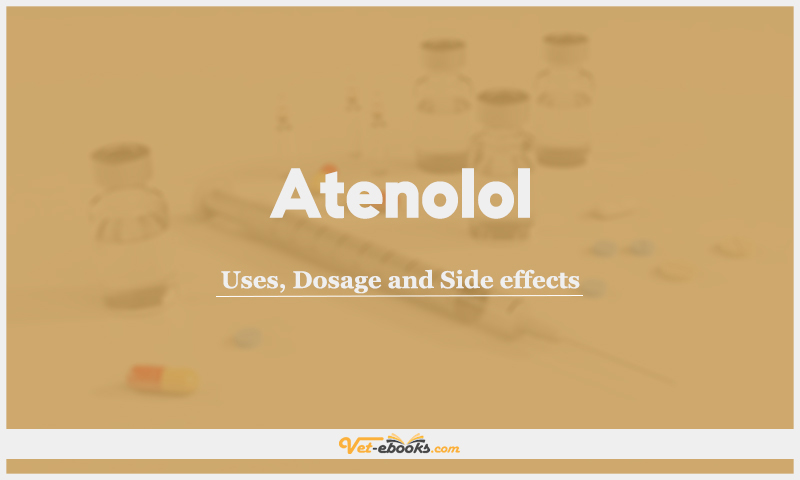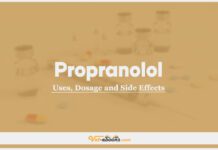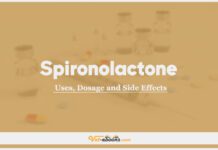Atenolol: Uses, Dosage and Side Effects

Overview
- Cardioselective beta-adrenergic blocker.
- It is relatively specific for beta-1 adrenergic receptors but can antagonize beta-2 receptors at high doses.
- Blocks the chronotropic and inotropic effects of beta-1 adrenergic stimulation on the heart, thereby reducing myocardial oxygen demand.
- Bronchoconstrictor, vasodilatory and hypoglycaemic effects are less marked due to its cardioselective nature.
Uses of Atenolol
- Treatment of hypertrophic obstructive cardiomyopathy (cats) or obstructive cardiac disease (severe aortic or pulmonic stenosis).
- Treatment of systemic hypertension.
- Can be used following introduction of alpha-blockade in management of pheochromocytoma.
- Treatment of cardiac tachyarrhythmias (including those associated with feline hyperthyroidism).
Dose of Atenolol in Dogs and Cats
Dogs:
0.2–2 mg/kg p.o. q12h; a lower dose is often used initially with gradual titration upwards if necessary.
Cats:
- 6.25–12.5 mg/cat p.o. q12–24h; a lower dose is often used initially with gradual titration upwards if necessary.
- If using the oral liquid doses of 0.2–2 mg/kg p.o. q12h can be used, with gradual titration upwards as necessary.
Drug Dosage Calculator
You Should Give:
Side Effects of Atenolol in Dogs and Cats
Most frequently seen in geriatric patients with chronic heart disease or in patients with acute or decompensated heart failure.
Include :
- bradycardia
- AV block
- Myocardial depression
- Heart failure
- Syncope
- Hypotension
- Hypoglycaemia
- Bronchospasm
- Diarrhea.
- Depression and lethargy may occur as a result of atenolol’s high lipid solubility and its penetration into the CNS
Contraindications of Atenolol in Dogs and Cats
- Patients with bradyarrhythmias
- Patients with acute or decompensated congestive heart failure.
- Relatively contraindicated in animals with medically controlled congestive heart failure as it is poorly tolerated.
Some Notes:
- Do not administer concurrently with alpha-adrenergic agonists (e.g. phenylpropanolamine) unless specific indication (phaeochromocytoma).
- The hypotensive effect of atenolol is enhanced by many agents that depress myocardial activity including anesthetic agents, phenothiazines, antihypertensive drugs, diuretics and diazepam. There is an increased risk of bradycardia, severe hypotension, heart failure and AV block if atenolol is used concurrently with calcium-channel blockers.
- Concurrent digoxin administration potentiates bradycardia.
- The metabolism of atenolol is accelerated by thyroid hormones; thus, the dose of atenolol may need to be decreased when initiating carbimazole therapy. Atenolol enhances the effects of muscle relaxants (e.g. suxamethonium, tubocurarine).
- Hepatic enzyme induction by phenobarbital may increase the rate of metabolism of atenolol.
- The bronchodilatory effects of theophylline may be blocked by atenolol. Atenolol may enhance the hypoglycaemic effect of insulin
Tip
Do You Want To Increase Your Veterinary Knowledge and Practical Skills?
You Can Now Browse and Download +3000 Books For Veterinary Professionals & Students Online.
Download Veterinary Books




















